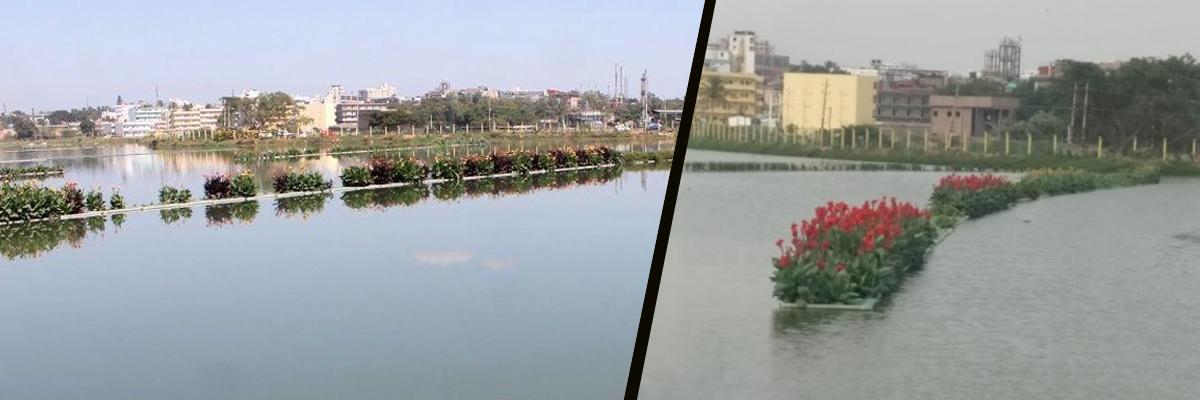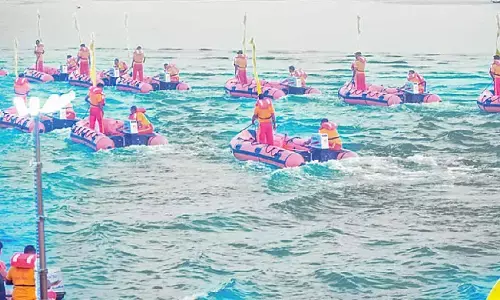Hebbagodi lake makes its way to the Limca Book of Records

The garbage dump which is located in Electronics City, the Hebbagodi Lake has made its way to the Limca Book of Records for being Indias largest floating island The 12,000sqft island has several strips of vegetation that divide the waterbody It is comprised of rafts that allow the plants to grow hydroponically without soil
BENGALURU: The garbage dump which is located in Electronics City, the Hebbagodi Lake has made its way to the Limca Book of Records for being India’s largest floating island. The 12,000-sqft island has several strips of vegetation that divide the waterbody. It is comprised of rafts that allow the plants to grow hydroponically (without soil, and through mineral nutrient solutions) and act as cleaning agents. The floating rafts are built with the help of reused PVC pipes.
The objective is to improve the quality of the water by removing excess nutrients and maintaining the pH level of the water between 6.5 and 8.5 which is considered to be normal. It is spread over 35 acres with a 2km perimeter and located in Anekal taluk of Bangalore Urban district, the lake came back to glory back in August 2016 when the biotech major Biocon India and its subsidiary, Syngene International, took up the lake revival project under their corporate social responsibility programme.
Silt-removing and deweeding operations that were taken up on a war footing. The weed had been composted to spread green cover around the lake. To increase the level of dissolved in oxygen in water, energy-officers have been installed.
“We’ve done whatever we could to rejuvenate it. Now, citizens should maintain it,” said wing commander (retd) GB Athri.
Biocon Foundation is now set to take up the Kammasandra and Bommasandra lakes. “Our aim is to rejuvenate Kammasandra Lake as it is slightly larger. Other companies should adopt it,” said its managing trustee Kiran Mazumdar-Shaw.
Shaw said that Bengaluru had 250 lakes in 1960, and it just has 34 now. “The government must ensure more lakes are revived. All stakeholders, including citizens, politicians and government officials, must start taking ownership of the lakes,” she said.

















